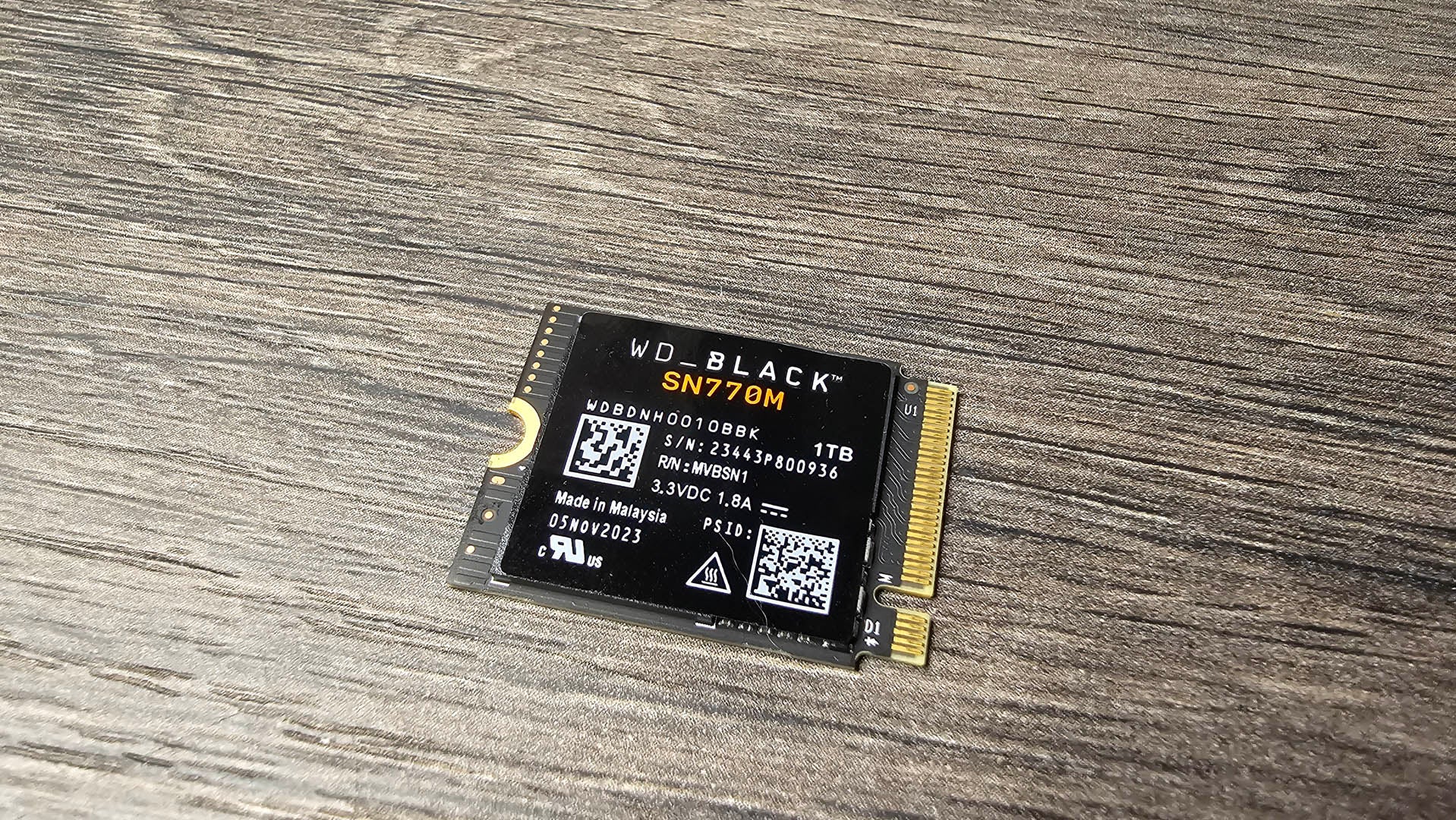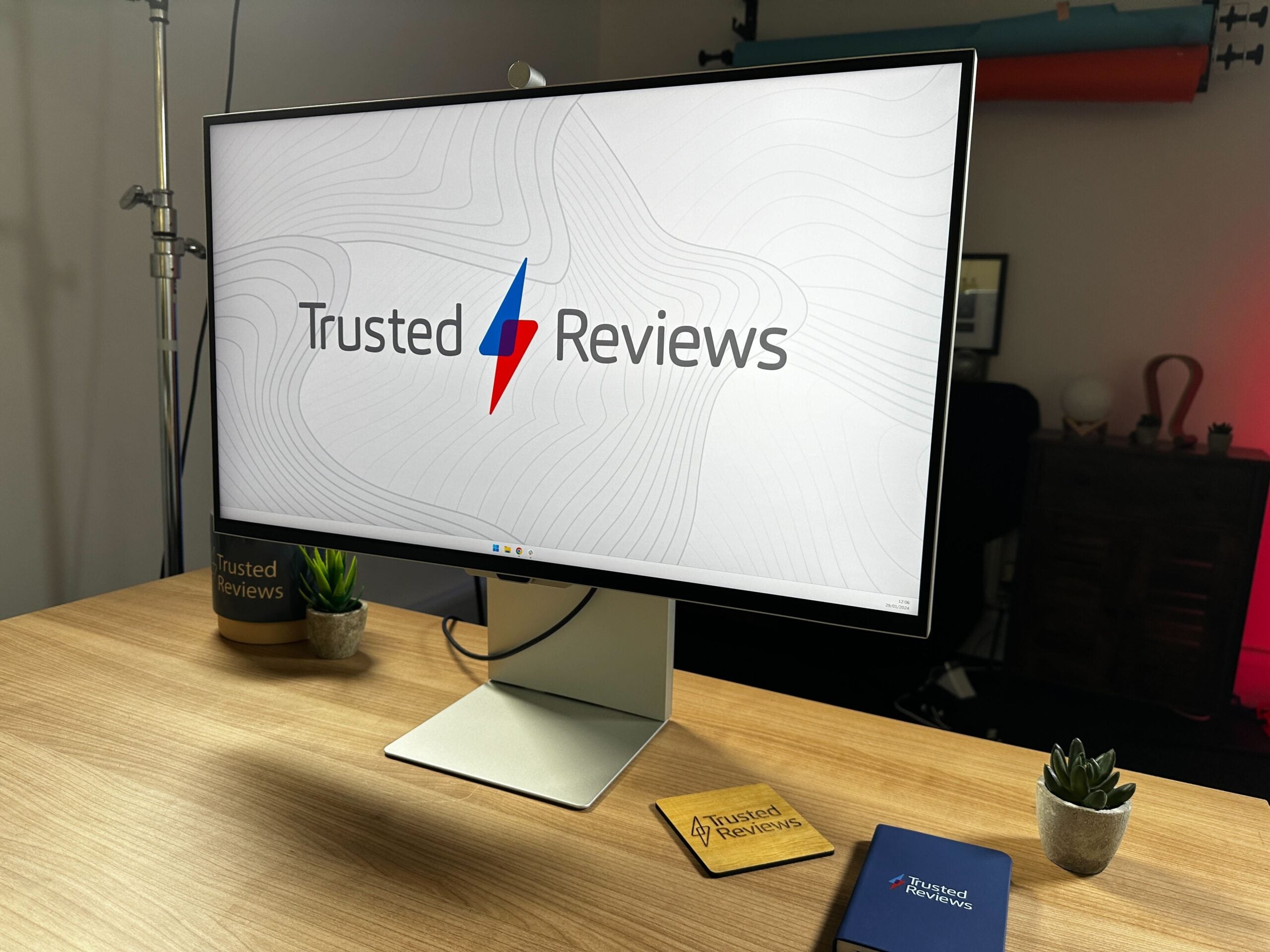Canon Selphy CP1500 Review
Small, cool, but ultimately just a little underwhelming





Verdict
The Canon Selphy CP1500 offers quick printing of small photos, and the convenience of paper and ink that will last for a known number of pages. It’s much more compact and better looking than an inkjet, and has useful features such as direct wireless and memory card printing. It’s a fun alternative if you just want to print small photos, but ultimately its prints lack the sharpness and intensity that you get from the best inkjet printers.
Pros
- Fairly good photo print quality
- Ink and paper bundles last for a specified number of prints
- Cute and compact
Cons
- Only prints on specialist papers, with a 10x15cm maximum
- Photos not a match for the best inkjets
Key Features
- A different way of printingThis printer uses the dye-sublimation technique – it’s quicker and more convenient than ink
- Photos onlyThe Selphy CP1500 will print on Canon’s specialty papers, but only up to 10x15cm (6×4”) format
Introduction
The Canon Selphy CP1500 is unlike any other printer you’re likely to have owned.
For a start, it’s strictly photo-focused, working only to produce glossy prints on special papers no bigger than a postcard (10x15cm). And rather than creating them with droplets of ink or a powdery toner, it uses dye-sublimation – a quick technique where the ink comes from a ribbon. The CP1500 is top of the Selphy range, and offers a selection of features likely to appeal to keen photographers.
The Canon Selphy CP1500 isn’t at all like a typical photo inkjet. It’s much smaller – roughly the size of a hardback book – and it’s smarter, with fewer gaps and openings. In part, its dinky size is deceptive, as you’ll need to slot in its paper tray before you can print, but even with this fitted, it’s got a far smaller footprint than the typical A4 inkjet, and it’s a lot easier to find room for.
Design and features
- Small photo prints only – no plain paper support
- Very small and smart
- Big colour screen, and support for an optional battery
You can buy this printer in black, pink or white, but the models are otherwise identical. It’s controlled by a 8.9cm colour screen, combined with large push-buttons, and there’s an SD card slot for direct photo printing – MicroSD is more common these days, but you can get a simple adaptor for next to nothing.
This printer’s big screen makes it easy to browse, preview and select memory card photos, but there’s no obvious print button once you’ve selected more than one – it’s only available as an option when viewing an individual photo.
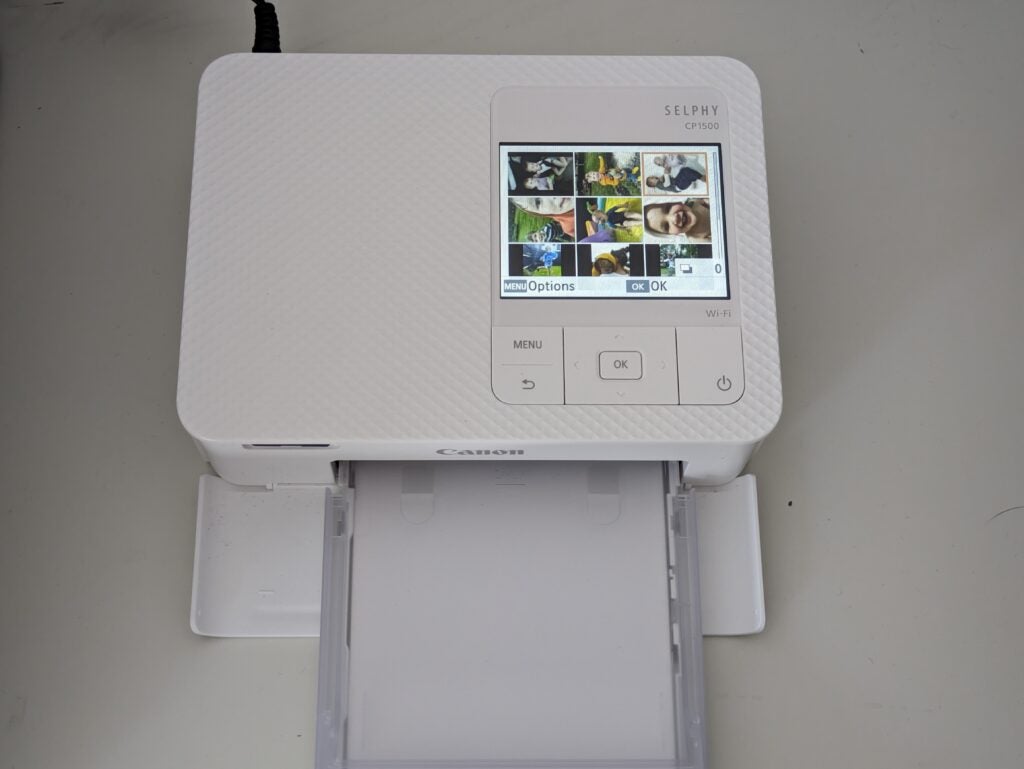
The Canon Selphy CP1500 has Wi-Fi, so you can join it to your home network and print directly from Android and iOS devices – unfortunately there are no PC drivers. Alternatively, you can use Canon’s Selphy Photo Layout app to make a direct wireless connection, without needing to first join the CP1500 to your home network.
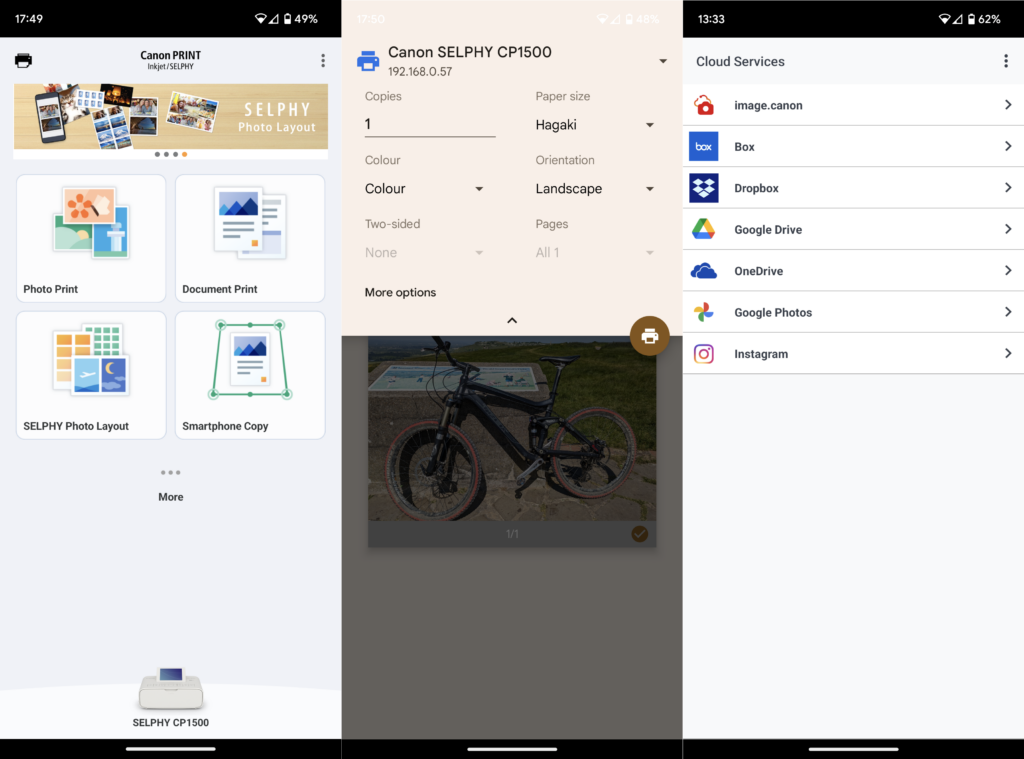
This is a highly portable printer, weighing less than a kilo. If you want to print literally anywhere -, you could buy its optional battery, which clips in at the back, though at the time of my review the official Canon accessory appeared to be out of stock.
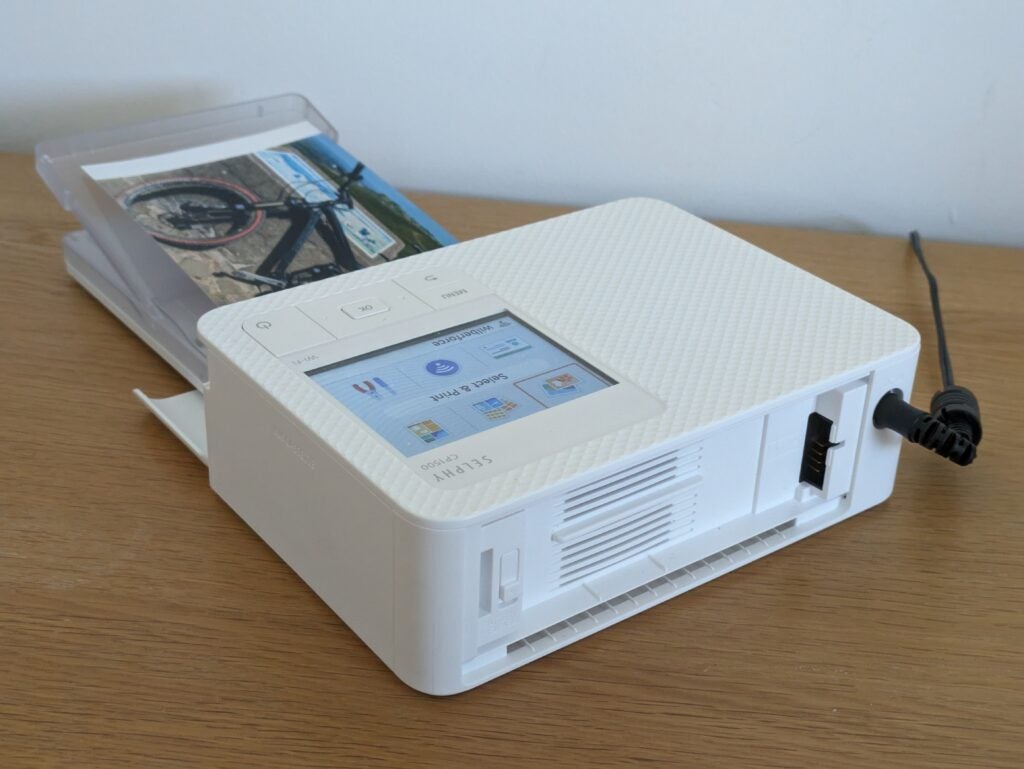
Canon has been making dye-sublimation (dye-sub) printers for decades, and they’re surprisingly simple. The CP1500 requires an ink ribbon, which fits neatly into a concealed compartment on its right-hand side. Each ribbon prints 36 times and comes bundled with that many sheets of photo paper, or you can buy a 108-sheet pack and pay a little less per print.
At the time of writing, the 36-print ink pack cost around £14, giving a price of 39p per print, while the £28, 108-print pack worked out at 25p. That adds up if you’re printing a lot of photos, but it’s not unreasonable: in comparison, you’d pay 14p per page to keep an Epson inkjet in 10x15cm photo paper, with ink likely to cost several pence more. It’s worth noting that the CP1500 itself isn’t a cheap printer – Canon’s own PIXMA TS-5350i, a fairly competent photo MFP, is less than half the price.
This printer supports formats up to 10x15cm (6×4”), which is a standard postcard-sized print. Canon’s paper range includes square and mini sticker formats, along with a credit card size ideal for prints to go in a wallet. However, no larger formats are available, and it won’t print on plain paper – this is strictly a small photo printer.
Dye-subs work by heating solid ink that’s impregnated in the ribbon, causing it to sublimate (turn directly into a vapour). This vapour then condenses on the paper, depositing a layer of colour. The CP1500 lays down yellow ink first, then red, then adds a layer of cyan – combining these three is enough to build a full-colour picture.
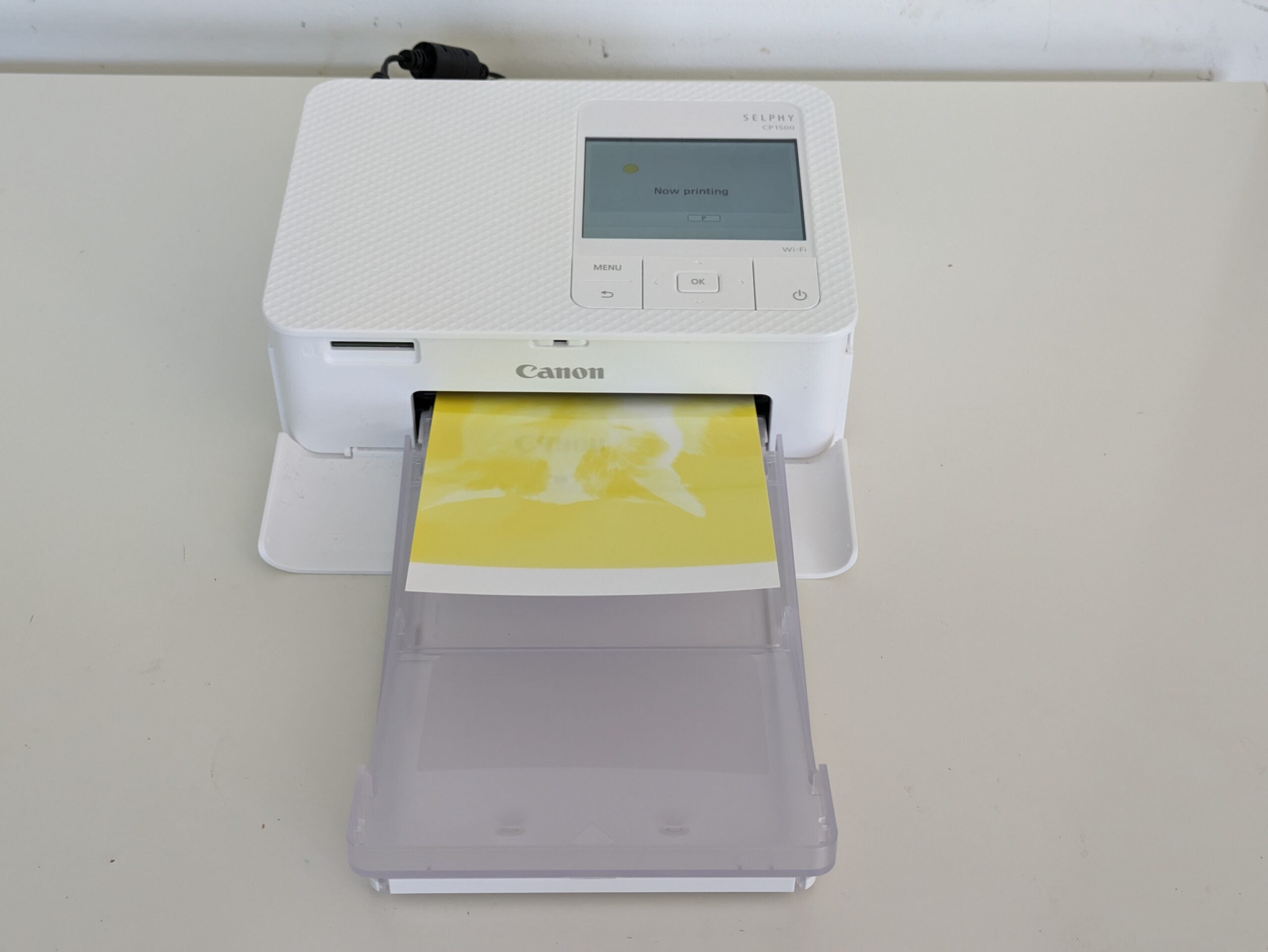
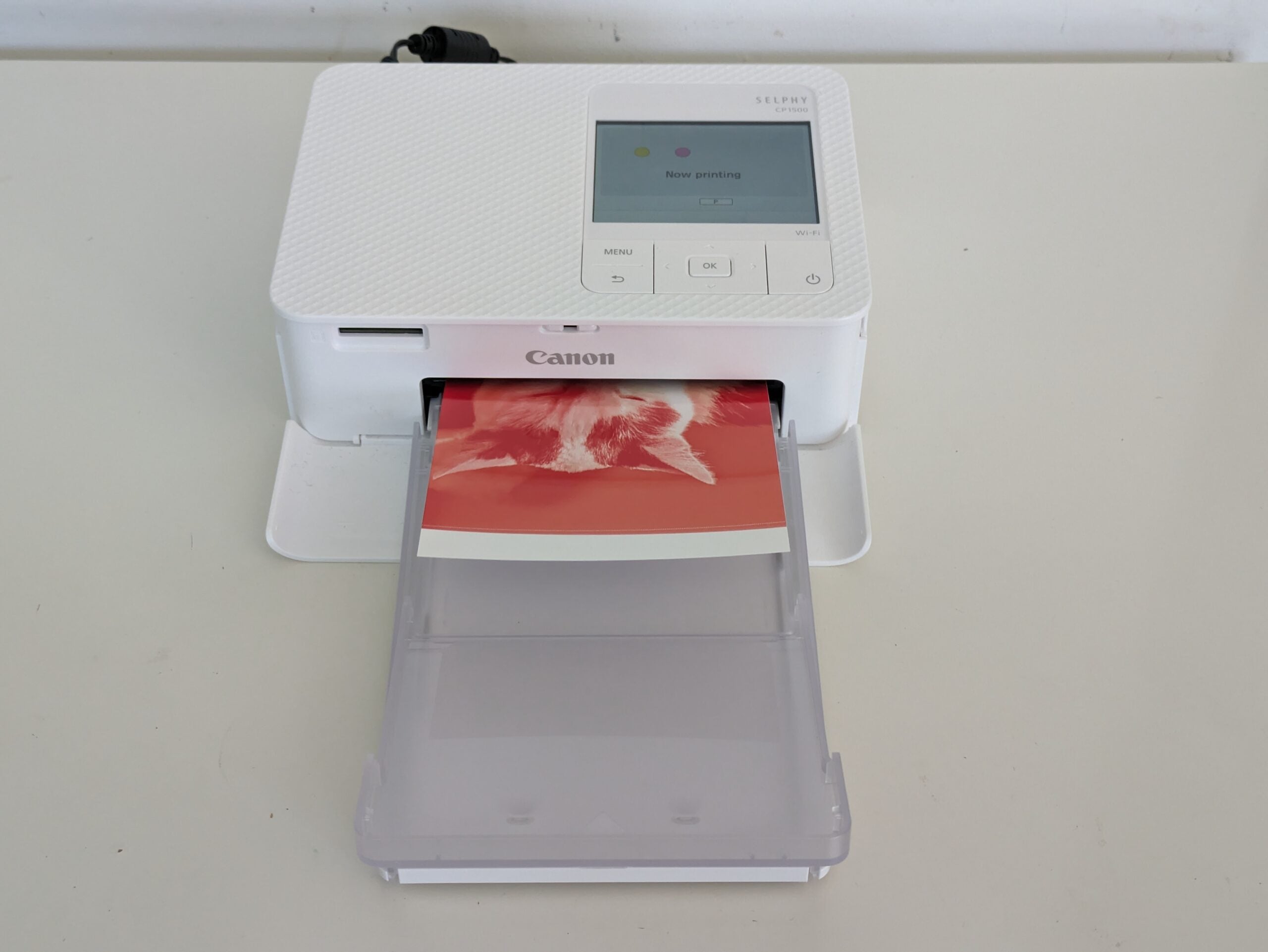
It’s fascinating to watch. To a symphony of quiet clicks and whirrs, paper gets drawn from the tray and into the printer before emerging with a yellow pattern. Fifteen seconds later it’s back with a reddish version of your photo beginning to take shape, then in another few seconds you can see the full photo. There’s a fourth pass through the printer while it lays down a transparent, protective coating, then the photo’s done. One thing to look out for is that 10x15cm prints do briefly poke from the rear of the printer, so you can’t place it directly against the back of a desk.
Print speed and quality
- Photo prints in less than a minute
- Good, but not brilliant photo quality
- Tear-off strips on 10x15cm paper
Canon says the CP1500 can deliver a single postcard-sized photo in just 41 seconds, but I timed it at 59 seconds from tapping Print to the image being dropped into its output tray. That’s still faster than just about any other inkjet printer working at its best quality setting on coated paper.
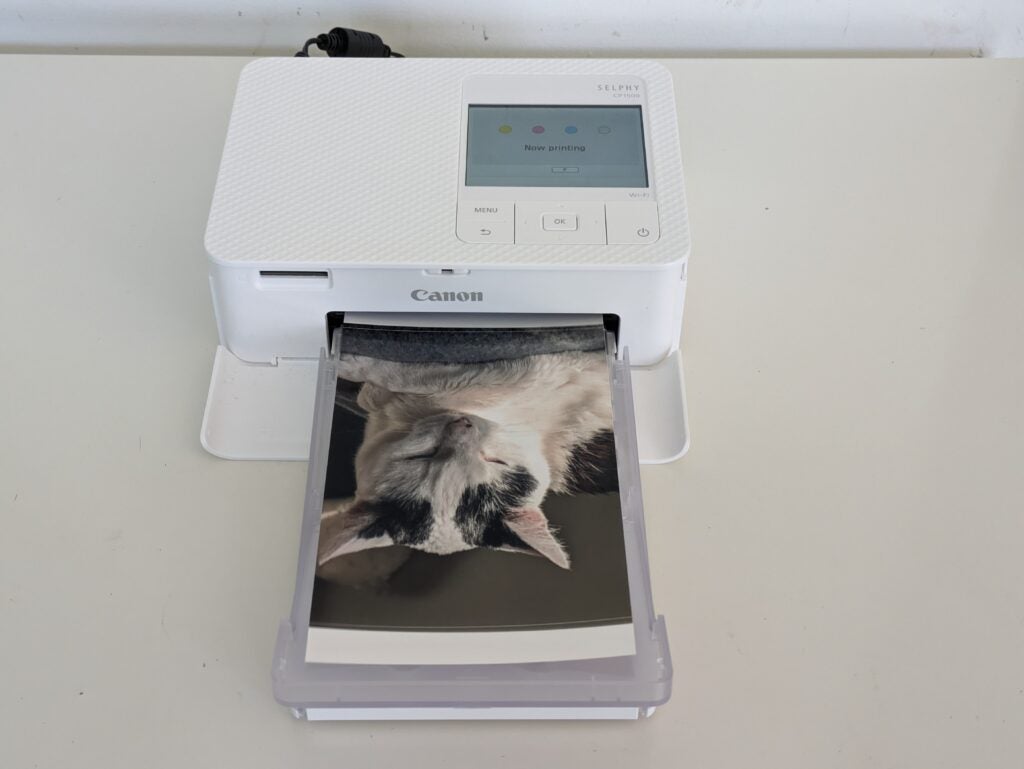
Although this printer delivers borderless photos, it can’t cover either end of postcard media. Canon has got around this by adding perforated tear strips to its 10x15cm paper. With these snapped off, there’s just the faintest trace of the perforations, but the final print is essentially without borders.
The Canon Selphy CP1500 has a resolution of just 300×300 dots per inch (dpi), which is far less than a photo inkjet. However, its dye-sub process lets it make each of those dots any colour it likes, whereas an inkjet needs to combine many to trick your eyes into seeing the colour it wants. You won’t see grain or blockiness in prints from the CP1500 – to the naked eye they look like they came from a lab – but compare them to those from a good inkjet and you might notice a slight softness to colour boundaries and outlines. Compare faces in particular, and those in CP1500 prints are a little less crisp and detailed.
Colours in some of my test prints also lacked intensity when compared to good inkjet prints. This was most noticeable around the intense greens of foliage, and in some summer skies. I’ve previously seen dye-subs struggle with the full range of shades in a blue sky, leading to blockiness and digital artefacts, but the CP1500 had no problem with anything I threw at it. Skin tones generally seemed accurate, too, if perhaps a touch lighter than ideal.
Latest deals
Should you buy it?
You want a small, stylish and convenient photo printer:
This is one of the smaller photo printers we’ve tested, making it a good option if you have limited desk space.
You want high photo quality:
Our tests show that the Canon Selphy CP1500 isn’t capable of the same quality as inkjet printers, especially for intense greens of foliage.
Final Thoughts
The Canon Selphy CP1500 is a small and stylish printer, focused on small photos. In most ways it does a great job – it’s fast and fuss free, and it’s also easy to use. If you want a portable photo printer, or one that’s more interesting than an inkjet, it could be worth the premium.
However, if you want the best quality prints, or you need to print on 5×7” or larger paper, you’ll need to get an inkjet such as Canon’s PIXMA TS5350i. Check out our Best Photo Printer round-up for more options.
How we test
Every printer we review goes through a series of uniform checks designed to gauge key things including print quality, speed and cost.
We’ll also compare the features with other printers at the same price point to see if you’re getting good value for your money.
Measured the time it takes to print with various paper
Compared print quality with other printers
Tested printing with monochrome and coloured ink
FAQs
It’s quite fast, spitting out lab-quality, postcard-sized photos in 59 seconds.
You can connect using Wi-Fi. Either join the CP1500 to your home network, or use it in direct Wi-Fi mode and connect wirelessly wherever you are.
Canon says they’ll last up to 100 years if you store them in an album.


